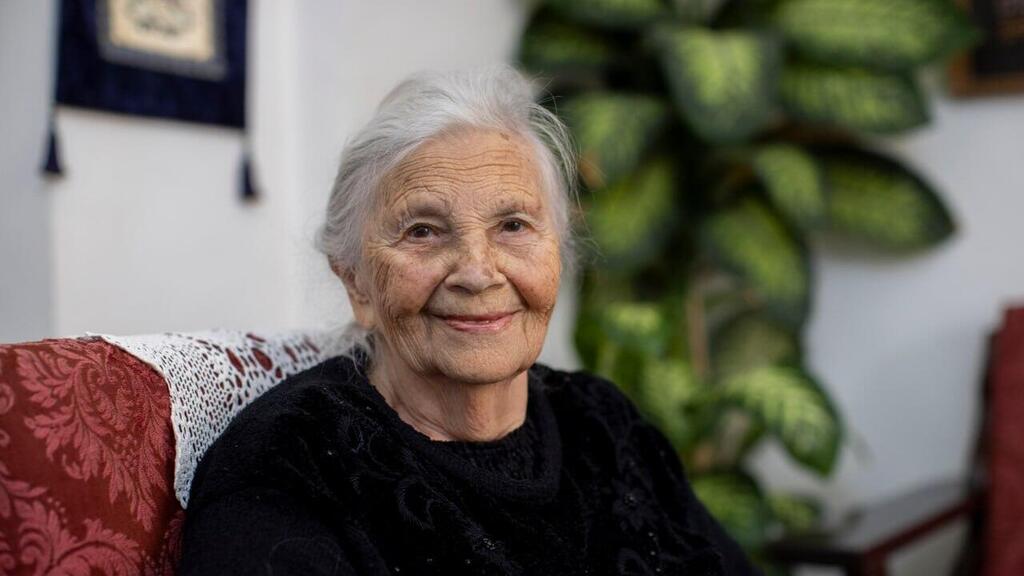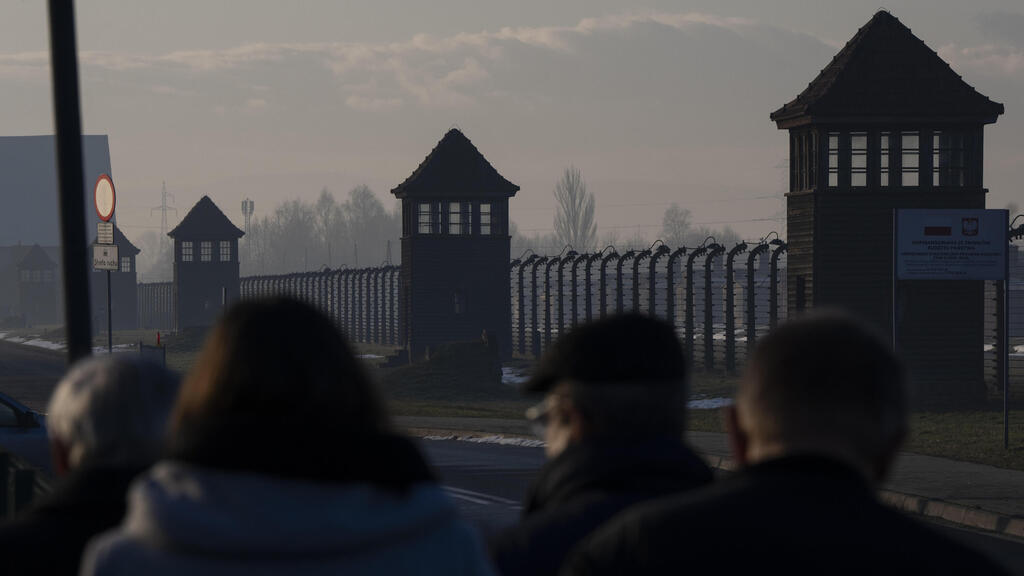Getting your Trinity Audio player ready...
"Someone asked me recently: for what can you forgive the Germans?" says Rachel Herczl. "I answered: I can forgive everything - the suffering, the hunger. But not the personal losses". The loss which 96-year-old Herczl refers to is the communal life of one hundred Jewish families in Budszentmihaly, a small town in north-eastern Hungary. "We were not rich", she recounts, remembering a typical straw thatched roof and a stone floor. "Because we were a small family, I lacked nothing. I was spoiled with love".
Her eyes light up when she talks of her childhood, surrounded by extended family. She mentions walking to the home of her grandparents and meeting her cousins who also lived there. Later, she and her parents moved to Tokay, some distance from the rest of the family.
Herczl now lives in a cool stone house, in the heart of the Jewish Quarter in Jerusalem's old city. A framed embroidery in her living room contains the last words her father, Rabbi Chaim Rosenber, said to her, in Yiddish, immediately after their train arrived in Auschwitz: "Do not forget one thing – He, who is above, is everyone's father".
On another wall hangs a sketch depicting Chaim and his wife Gittel. It is a facial composite based on her recollections, like those made by the police when there is no photograph available – no pictures remain of her parents, and the sketch is the closest she has.
A little below is a smiling photograph of her oldest grandchild, Michal, who was killed by a suicide bomber in the French Hill neighborhood of Jerusalem more than 20 years ago. A large photo on another wall shows Herczl surrounded by her many descendants – three daughters, grandchildren, and great-grandchildren.
Back to the train
Herczl is accustomed to telling her story. Previously, she went to school, but now that leaving home is harder, she speaks to groups that visit her. "I live it", she explains, "It is not something one can forget".
In spring 1944, shortly after Germany invaded Hungary, Jews in Tokay were forbidden to leave their homes. Rachel, an only child, was 15. From their window, she and her parents watched families leaving their homes. Soon, their turn also came.
Following a week of being closed inside the Jewish community's buildings, they were taken to a nearby town and from there, to the trains which brought them to Auschwitz. Years later, Rachel will enter the carriage in Yad Vashem, the holocaust memorial. For her, this was a small victory, maybe a way to confront the trauma.
In Auschwitz, she parted from her parents, the moment immortalized in the embroidery on her living room wall. While she has those last words from her father, all that remains of her mother is a look of terror. Her mother was in the group of women destined for extermination, and Rachel intended to join her. But one of the prisoners noticed her and prevented her and stopped her. To convince her not to follow her mother, he tried to calm her. "He told me in Yiddish that the old people have it better, they don't have to work". This gesture saved her life, "but the last thing my mother saw was a strange man holding me and not letting me go", says Rachel.
Despite the decades since, this memory still pains her, but in real time it was swept away by the dizzying events: the showers the young women were sent to, shaving all their hair, uniforms, bunks, the daily march to work in camp commanders' vegetable gardens and later in a sewing workshop, all to the music of a band.
The days blended into one another, but some stood out, and she remembers them to this day. For example, when four brave women were executed. They smuggled explosives from the armaments factory in the camp, hoping to blow up the crematorium. Shortly afterwards, the Germans began to evacuate the camp and instructed the prisoners to march along frozen paths.
Get the Ynetnews app on your smartphone: Google Play: https://bit.ly/4eJ37pE | Apple App Store: https://bit.ly/3ZL7iNv
Rachel marched for two and a half weeks in sub-zero temperatures, in what became known as the Death March – a German attempt to lead their prisoners into Germany, to prevent their release by the Allies. During this period, she finally met a familiar face – her cousin. Finally, Rachel understood, "We are free!". A group of young people joined together to embark on the long journey home. "It took months", she says, "We had no money and there were no trains".
Outside her home
The first stop in Hungary was Budapest, to inspect a list of survivors. Her parents were not on it. The next stop was the family home in Tokay, but people were living in it. "The man who lived there did not let me in", she says. She heard that in another house could be found religious books which had belonged to expelled Jews. There she located the only souvenir she has of her parents, her father's book.
Rachel came to Israel and married Moshe, also a survivor, and worked in education. Now she is assisted inter alia by the Foundation for the Welfare of Holocaust Victims. For her, living in Jerusalem is a form of closure. Initially, she had reservations about living in the Jewish Quarter, but agreed because Moshe, who died more than 30 years ago, wished it.
Of the October 7 massacre, she says, "I would have never imagined that we would undergo something like that". On the day of the attack, even before she heard the news, she dreamt about Moshe. "He did not say anything, but he was very sad".



